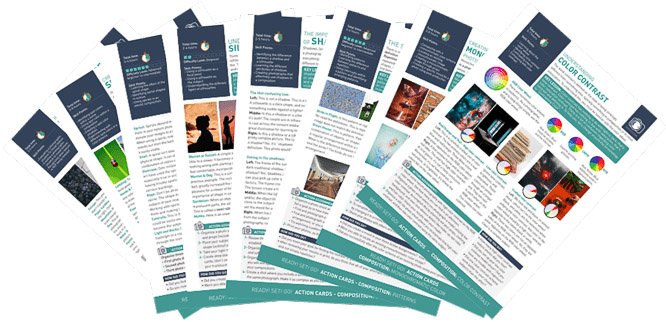I’ve covered shutter speed in great detail before, but recently this question popped up:
‘When would you typically use all the different shutter speeds?’
It dawned on me, that it wouldn’t hurt to provide a list of when you would typically use different shutter speeds, so here it is. Thanks to Carostory for the request. She’s taking my video training course and recently left me an awesome testimonial.
Different Shutter Speeds
You will notice that the shutter speed halves each time, which means that the exposure changes by 1 stop. There are third stops between these speed on cameras, but we’d be here all day if I went through them all.
A lot of the speeds listed below are dependant on how close the subject is to you, so bear that in mind. Also, this doesn’t really take exposure into consideration, this is purely about what you capture at these speeds.
1/4000 of a Second – Freezing really fast moving objects. Think of the sorts of things you may capture is a high-speed camera. A baseball pitch, a balloon pop, that sort of thing.
1/2000 of a Second – Freezing the flight of birds. They move their wings really fast so you have to crank up the shutter speed really high.
1/1000 of a Second – Freezing very fast moving objects, such as moving vehicles.
1/500 of a Second – This is where you will start to freeze fast moving people, such as runners and cyclists.
1/250 of a Second – A great speed for freezing your still subject, without having to think too much about focal length and how that affects the motion blur. Great for portrait photography.
1/125 of a Second – You won’t typically want to go much slower than this if you’re shooting handheld, otherwise, you will likely capture motion blur from your hands. This is also where you will start to be able to use your shutter speed for panning.
1/60 of a Second – Again, this is a great speed for panning photography, and handheld photography in low light.
1/30 of a Second – This is about as slow as you will want to go while capturing panning photography, as much slower and your photo will become too much of a blur.
1/15 of a Second – You can mount your camera on a tripod at this speed and capture sight movement from moving objects. Think people walking, cars moving in traffic, water blurring slightly.
1/8 of a Second – Capturing motion blur in water.
1/4 of a Second – Blurred movement in a scene. Not so little that it appears accidental, but not so much that it’s hard to tell what’s going on.
1/2 of a Second – More motion blur, only much stronger than before. Think of water starting to appear like mist.
1 Second – Twilight photography. The sun may not be completely gone, but there’s not enough light to make up the exposure you’re looking for. You may incorporate a flash, and you’re more than likely using a tripod.
More than 1 Second – This is where night photography starts to come into play. You can play with different speeds and capture awesome nighttime photos.
Bulb Mode – This is used for exposures longer than 30 seconds, where you can manually control the exposure time with the shutter release. This is used for astrophotography where you may want to capture some stars. You may also use this mode for slow sync flash where you want to have immediate control of the shutter speed.
— — —
